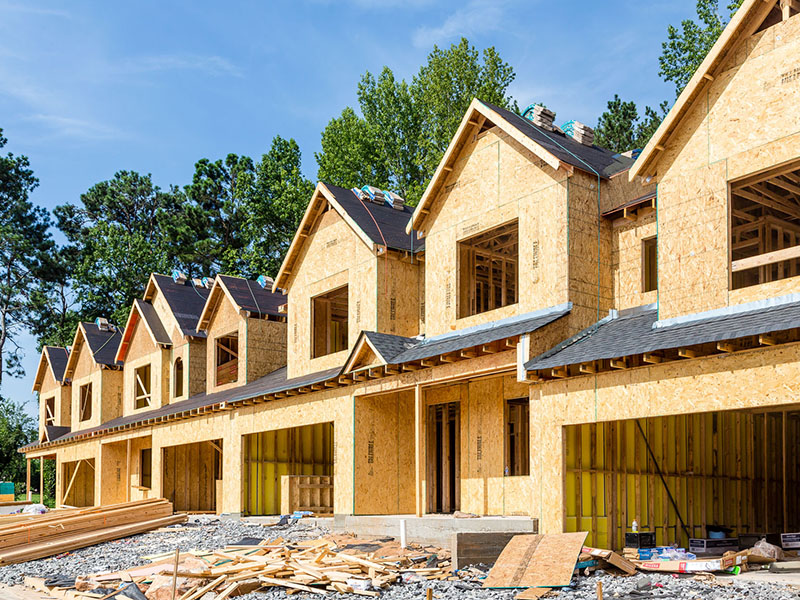
On the surface, home ownership appears to be the one sure route to prosperity in Canada — in fact, the realities of the housing market are entrenching a wealth gap, and pose a growing challenge for policymakers, suggests a report from TD Economics.
To start, the report stressed that the role of the housing market on wealth inequality isn’t straightforward. While there may be a perception that inequality is worsening, in fact the wealth gap has narrowed a bit over time, “with the rise in homeownership among low-wealth households acting as one force keeping inequality in check.”
However, the underlying data here is a bit deceiving too, the report suggested.
In fact, younger home-buyers are initially classified as low-wealth households because of their large mortgages, but they ultimately migrate up the net wealth rankings as their mortgage is paid down and the value of their house rises.
“This means that wealth inequality is really a narrative that differentiates Canadians who are homeowners versus those who are not,” the report said.
Yet, with barriers to entering the housing market rising, it’s becoming increasingly difficult for “low wealth” households to get on the track to prosperity — increasingly, first-time buyers need the advantages of higher incomes, and/or handouts from their parents to get into the real estate market in the first place.
One factor behind this reality is the introduction of a tougher mortgage stress test in response to the financial crisis, the report noted.
While the stress test “has been a key factor mitigating financial risks within the housing market, a side-effect is that lower-income and lower-wealth borrowers face a high bar on accessing homeownership,” it said.
Additionally, it noted that a 2020 survey in Ontario found that 41% of young homeowners had received an assist from their parents in the form of money for a down payment. And, other research has found that this sort of assistance is twice as likely when the parents themselves are homeowners, as they “tend to have higher levels of wealth that can be passed on as financial assistance to their children.”
Ultimately, the report concludes it is “too simplistic to define Canada’s wealth inequality as one of rich versus poor. Over time, it has proven to be one of homeowner versus non-homeowner.”
Now, with housing affordability at its worst level in decades, “the current generation of young Canadians is likely to not just repeat, but accentuate the narrative of wealth inequality across housing lines,” the report said.
Indeed, while rising interest rates have lowered home prices and down-payment thresholds, “it has ultimately worsened affordability with higher debt service costs,” TD noted.
Given its critical importance to wealth inequality, declining real estate affordability poses a challenge for policymakers — and efforts to date to address the issue have fallen short.
For instance, government policies to help first-time buyers — such as the First-Time Homebuyer Incentive or the new Tax-Free First Home Savings Account — do not “change the calculus in either the supply-demand mismatch, nor the gap in homebuying potential between those with higher incomes and pre-existing housing or family wealth, versus those without those advantages,” the report said.
Similarly, efforts to boost housing supply may just expand the holdings of multiple-property owners that have housing wealth to start, it noted.
And, measures designed to bolster savings among lower-income households — such as TFSAs, RRSPs, and RESPs — also “tend to disproportionately benefit higher-income, higher-wealth households who naturally have more savings to invest, and even those targeted at lower-income, lower-wealth households are often left untapped.”
“All said, the savings and investing landscape is so heavily skewed towards housing because the housing system itself is designed to perpetuate inequality between homeowners and non-owners, from zoning that prioritizes single-family homes to tax policies that subsidize ownership. More policies are instead needed to improve outcomes for long-term renters,” the report noted.
This could include curbing existing housing subsidies, or boosting supports for renters “to allow the opportunity to save and keep up, rather than forcing Canadians to leverage to greater lengths in order to ‘get in’,” it said.
“On the surface, Canada might appear to be doing quite well on inequality, but digging beneath that surface shows that we have merely papered over the fissures that separate Canadians along housing lines,” the report concluded. “Governments should ensure they are assessing how new and existing policies can unintentionally deepen the divides and how to improve broader access to wealth creation.”